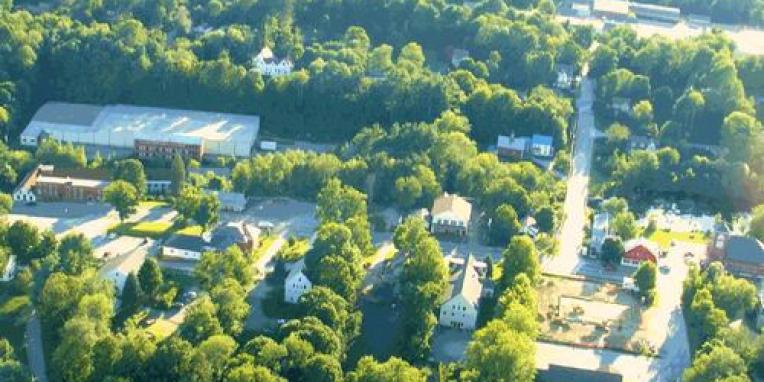Aquifers
Aquifers are defined as a body of rock or soil formation that is sufficiently permeable to conduct groundwater in sufficient volumes to be economical. They are found where saturated layers are permeable and the storage and transmission of water can take place. Aquifers are generally supplied through precipitation. Precipitation infiltrates the ground through the aerated zone where impurities may be filtered out of the water. The water then moves to a saturated zone (aquifer) where the pore spaces between soil particles are filled by water. Surface water, springs, wetlands, lakes and streams are generally discharge points for aquifers.
Aquifers of medium to high potential occur in Southwest New Hampshire generally as stratified deposits of sand and gravel (known as unconsolidated deposits). Coarse-grained stratified deposits (sand and gravel) have abundant pore space to store water, and pore space may amount to as much as 30% of the total volume of the deposit. Consequently, these stratified deposits of sand and gravel, if saturated, can be good sources of medium to high-volume aquifers.
Bedrock aquifers (known as consolidated deposits) are generally a less-productive water source. However, when a saturated layer of sand or gravel overlies fractured bedrock, its ability to transmit water increases substantially. Due to the lesser volumes needed for individual domestic use and the ability to isolate the bedrock aquifer from surface activities, they are usually adequate for individual domestic wells.
In contrast, a glacial till aquifer will yield less water than a stratified drift aquifer. The physical characteristics of the till, its variable grain size, density, and compacted nature cause the porosity to be considerably less than the stratified drift type aquifer. Therefore, the transmission and ability to store water is greatly decreased in the glacial till type of aquifer.
Groundwater in saturated soils is generally vulnerable to pollution because surface contamination can infiltrate directly into it. It is possible to trace the source of pollution by investigating possible contamination sources up-gradient of the identified pollution. In some cases, the watershed boundary may be a limiting criterion. However, pollution in bedrock aquifers is much more difficult to trace. This is because the groundwater contained in the fractured bedrock may not be discernable on the ground and may not, in fact, be related to the surface topography or assumed surface flow direction.
The US Geological Survey (USGS) published the “Geohydrology and Water Quality of Stratified-Drift Aquifers in the Contoocook River Basin, South-Central New Hampshire”; USGS Water-Resources Investigations Report 92-4154; 1995. This report and associated aquifer delineation maps for the Contoocook River Basin were the basis for the Antrim Aquifer Map. The map illustrates the distribution of saturated, unconsolidated, (not bedrock) geologic material on the land surface. There are bedrock aquifers beneath the unconsolidated materials but these were not part of this particular study. The USGS study identifies areas of stratified drift (sand and gravel), provides a measurement of the speed with which water passes through those materials, and estimates the saturated thickness of those materials.




